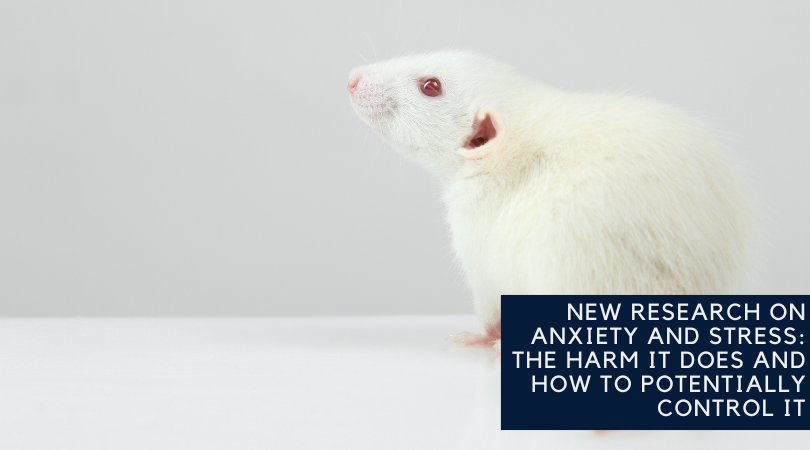Research with Animals Sheds New Light on Issues Surrounding Fertility
Posted on
Spring has arrived, and with it several new discoveries related to fertility and birth. Exploring the complexities of fertility and reproductive health has long been a focal point of scientific study, with researchers utilizing animal models to gain insights into the intricate mechanisms underlying fertility-related issues.
From understanding the genetic processes that occur during ovulation to identifying a non-hormonal male contraception method, recent studies involving animals offer valuable perspectives on fertility that can inform human health.
Transforming Skin Cells into Viable Eggs
Researchers from Oregon Health & Science University have developed a new technique that can transform a skin cell into an egg capable of generating viable embryos.
The research team was able to accomplish in vitro gametogenesis (IVG) in mice by transferring the nucleus of a skin cell into a donated egg from which the nucleus has been removed. The team used cytoplasm to cause the skin cell nucleus to discard half its chromosomes. They then used in vitro fertilization to fertilize the new egg with a sperm cell, creating a viable embryo with two sets of chromosomes, one from each parent.
If effective in humans, the discovery could be a major step forward for women experiencing infertility who are unable to produce viable eggs due to advanced maternal age or other factors, such as cancer treatment. It could also enable same-sex male couples to have a child related to both parents.
How Olfactory Cues Affect Reproductive Aging
Researchers at the University of Otago in New Zealand have uncovered a connection between sensory cues from the opposite sex and how animals age.
Previous studies have shown that interactions with the opposite sex can accelerate aging. The new study builds on those findings by revealing that faster aging can be caused by sensory cues alone.
The researchers tested whether smelling female mice would affect mortality and reproductive aging in male mice. They separated male mice into four different housing environments: alone, housed with two female mice, alone but exposed to the scent of two absent female mice, and housed with two female mice and exposed to the scent of two absent female mice.
The results showed that male mice who were exposed to female olfactory cues in midlife to old age showed reduced fertility and an increased mortality rate.
The researchers speculated that olfactory cues trigger the release of hormones that can have both short-term and long-term physiological effects.
Protein Interactions that Control Female Fertility
Researchers at the Francis Crick Institute have uncovered the intricate protein interactions that control fertility in female mice.
The team investigated the proteins responsible for ovarian development before and after birth, aiming to enhance the understanding of female infertility.
Previous research has identified the role of the Foxl2 gene in initiating embryonic ovarian development. When the Foxl2 gene was removed from mouse embryos, the ovaries of the embryos developed abnormally and the adult mice were infertile. When the Foxl2 gene was removed from adult female mice, the ovaries transformed to resemble testes
In the new study, the researchers found that the removal of the Foxl2 gene has the most significant impact after birth. Among the many proteins that interact with Foxl2 after birth, they identified one, USP7, that also significantly affected ovary development. When the Usp7 gene was removed from mice after birth, the ovaries of the mice did not develop past puberty and the adult female mice were infertile.
As the FOXL2 and USP7 proteins play similar roles in humans, the discovery of their functions in ovary development could help improve the understanding of how female infertility develops.
Decoding the Genetic Process During Ovulation
Researchers at Cornell University have used spatial transcriptomics to create a detailed map of gene activity during ovulation in mice.
Spatial transcriptomics is an imaging technique that analyzes and maps the gene activity in a tissue sample. In this case, it enabled the researchers to determine the timing and location of gene activity.
Having a detailed map of cellular communication during the ovulation process could enable researchers to identify new genes to target through therapeutics.
A Non-Hormonal Contraceptive for Men?
Researchers at the Salk Institute have identified a potential new use for an anti-cancer drug: a birth control pill for men.
The drug, called entinostat, is an HDAC inhibitor taken orally. In experiments with mice, the research team discovered that the drug acts as an on/off switch for sperm creation, rendering them temporarily infertile without using hormones or affecting their libido.
Within two to three months after stopping entinostat usage, the male mice were once again able to successfully impregnate female mice, and all the pups were both healthy.
The drug works by blocking a gene regulatory factor called SMRT, which plays a role in regulating retinoic acid receptors in sperm creation. Blocking receptors for retinoic acid is known to stop sperm production in mice and rats, but it is associated with serious side effects.
Other male contraceptive candidates have focused on blocking testosterone, which can have side effects such as. Other drug candidates in various stages of testing require either an injection or an in-office procedure.
This is the first method that can be taken in pill form and does not have major systemic repercussions. The drug has already been approved by the FDA for the treatment of advanced breast cancer, so it has already been deemed safe for humans.
The team now hopes to test entinostat as a male contraceptive in larger animals and eventually in humans.